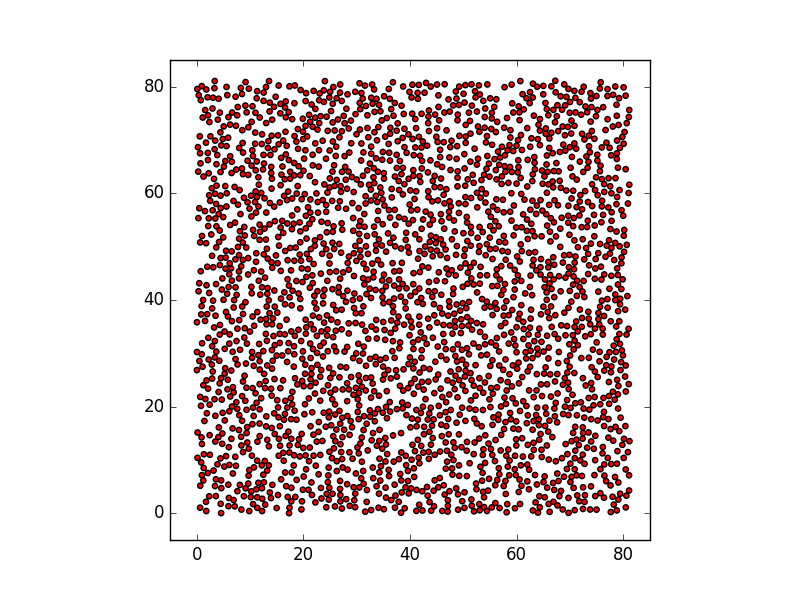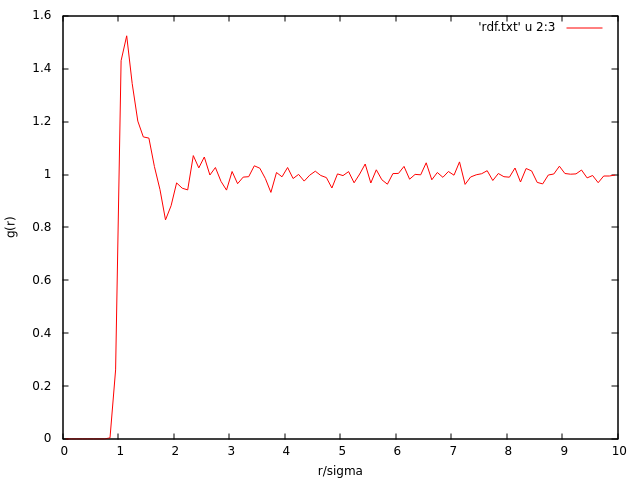Dear lammps user,
My lammps version is 7 Aug 2019.
As I read from the lammps mailing list, we can obtain a repulsive potential by setting the cutoff distance for Lenard-Jones potential equaled to 1.12. I set it in the following lammps input script which is hoped to generate non-overlapping spheres.
However, you can notice from the attached final-snapshot of the simulation that there is still very tiny overlap between some particles. It will be more clear in higher dense systems.
My questions are :
-
Is there anyway to remove such overlap completely for the defined Lenard Jones potential?
-
My particle diameter is 1.0 . However, for the final snapshot, I still can see non-zero values for the radial distribution function g® for r smaller than the particle diameter, 1.0 . Could you please tell me your suggestion about the reasons for such inconsistent plot. I guess it is due to the tiny overlaps between some particles .
I tried to use the command delete_atoms in the input script, but it did not show any improvement.


Dear lammps user,
My lammps version is 7 Aug 2019.
As I read from the lammps mailing list, we can obtain a repulsive potential by setting the cutoff distance for Lenard-Jones potential equaled to 1.12. I set it in the following lammps input script which is hoped to generate non-overlapping spheres.
However, you can notice from the attached final-snapshot of the simulation that there is still very tiny overlap between some particles. It will be more clear in higher dense systems.
My questions are :
- Is there anyway to remove such overlap completely for the defined Lenard Jones potential?
the lennard-jones potential is a “soft” potential. so how much potentials are repelled depends on the choice of the potential parameters. a larger epsilon makes it steeper and a larger sigma increases the effective diameter. if you want a guaranteed distance, you need to use a modified lennard-jones potentential, where the discontinuity is not at r=0, but a larger r. lj/expand would be an example.
- My particle diameter is 1.0 . However, for the final snapshot, I still can see non-zero values for the radial distribution function g(r) for r smaller than the particle diameter, 1.0 . Could you please tell me your suggestion about the reasons for such inconsistent plot. I guess it is due to the tiny overlaps between some particles .
as already explained, the lennard-jones potential completely disregards the diameter property (so does lj/expand for that matter).
there is no inconsistency. the g(r) looks like it should for the potential and parameters you have chosen. there is a problem with your understanding here and not paying attention to advice and explanations being given.
axel.

